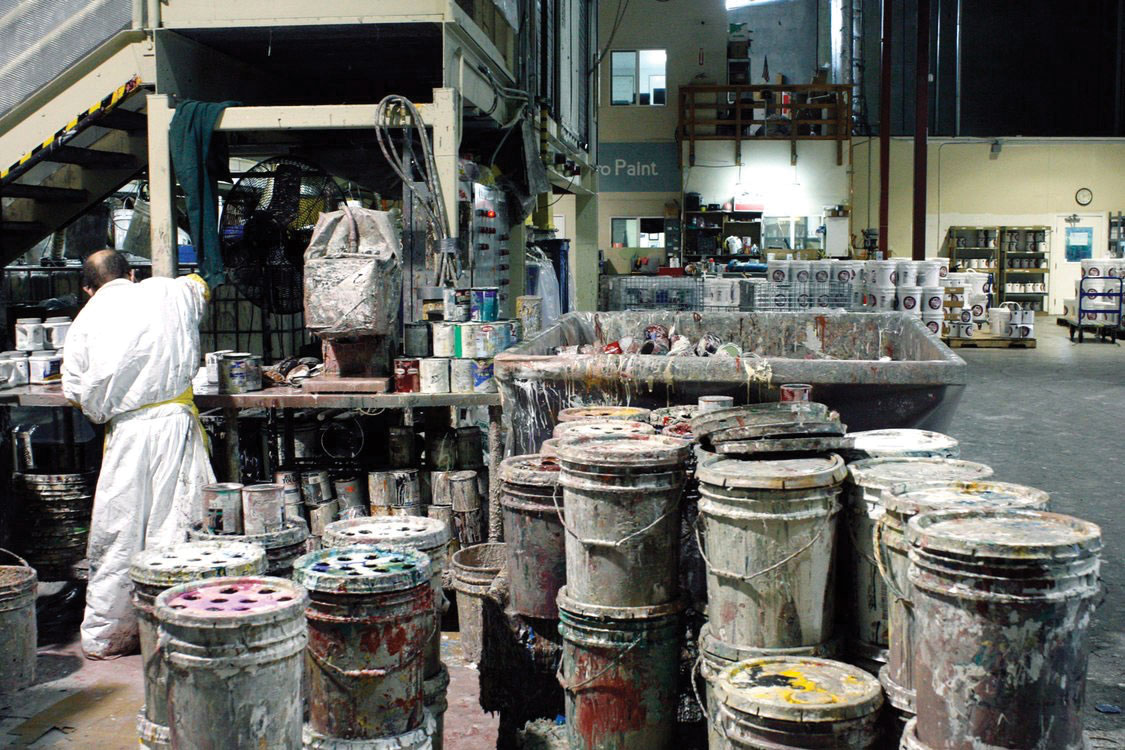How To Make Green(er) Paint
America is drowning in old paint, but it needn’t. Just ask chemist Jim Quinn ’83.
You’ve probably disposed of a can of old paint. Maybe it was rusty, moldy, or hardened into a concrete cylinder. Or maybe it was usable but you just didn’t need it any more. You aren’t alone. The EPA reckons that as much as 10% of all paint in the United States goes to waste. That’s roughly 65 million gallons of paint—enough to fill a line of paint cans stretching from Portland to Bucharest—every single year.
Chemist Jim Quinn ’83 has been working on ways to recycle old paint since the 1990s. At Reed, he operated the nuclear reactor and wrote his chemistry thesis on the effects of nuclear decay. Now he runs the hazardous waste program at Metro, Portland’s regional government charged with recycling and solid waste disposal. The basic idea behind MetroPaint is simple. Divert old cans of paint from the waste stream. Pour them into giant vats. Filter, recondition, repackage, and reuse. Instead of polluting the groundwater, the paint is born anew.
The reality, of course, is more complicated. “It took a long time for people to accept recycled paint as a viable product,” Jim says. Over the years, however, Metro has proven its ability to produce medium-grade paint at an attractive price. “People from the coast, to the valley, to eastern Oregon have all had it on their homes for 10+ years and say it still looks good,” said a longtime employee.
On a busy day, the 20-person staff at Metro can process more than 5,000 gallons of paint. One of the challenges is that certain colors are more popular than others. They often have to discard colors like dark brown and dark green because there is too little demand.
Jim believes other products should follow the same stewardship model. He advocates legislation to require companies that manufacture hazardous materials to support similar recycling and disposal programs. “It’s not about recovering money,” he says, “but about spending the money to process these materials responsibly.”
